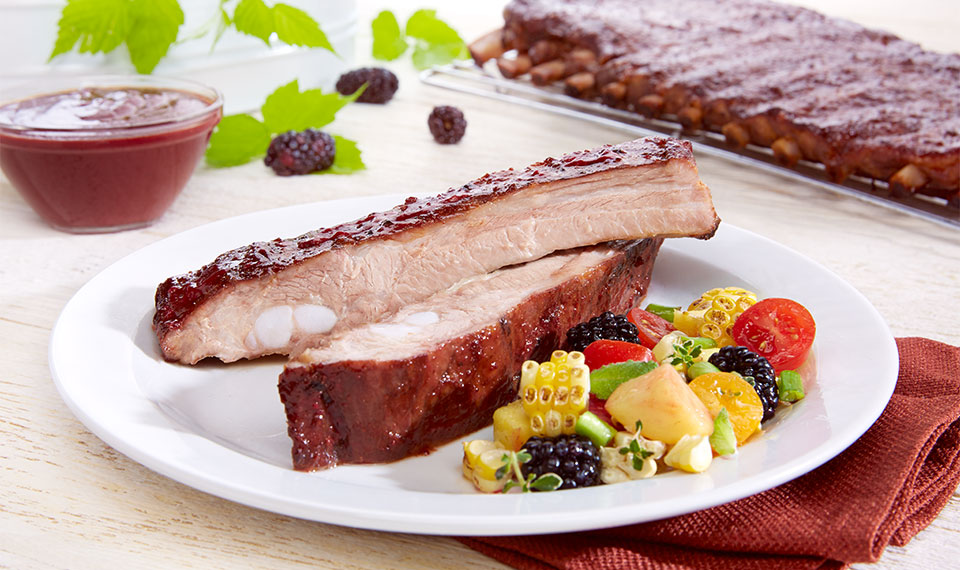
Barbecued St. Louis style ribs
With Chipotle Blackberry Sauce
Sweet blackberries and smoky chipotle bring out the best barbecued flavor of these tender pork ribs.

Ingredients
- 1 rack Open Prairie® Natural* Pork St. Louis style ribs
- Sea salt
- Freshly ground pepper
Instructions
- Prepare grill for indirect cooking at 300°F. Remove membrane from back of ribs and season with sea salt and black pepper. Let ribs sit to come to room temperature.
- Put sauce ingredients in food processor and blend until smooth. Cook over medium heat for about 20 minutes to meld the flavors. Sauce can be strained or used as is.
- Brush lightly over ribs and cook on grill for 2 to 3 hours until ribs are tender. Brush sauce over ribs during cooking. Serve with remaining sauce.
Ingredients
Chipotle Blackberry Sauce
- 1 can chipotle peppers in adobo
- 3 c fresh blackberries
- 1/3 c sugar
- 3 Tbsp lemon juice
- 3 Tbsp cornstarch
Instructions
- In a small bowl, mix together the lemon juice and corn starch. Set aside.
- In a saucepan, cook the blackberries and sugar over medium-high heat, stirring frequently, for about 3 minutes, or until the blackberries are broken down and have released their juices. Then stir in the cornstarch mixture and bring the sauce to a low boil until thickened, about 1 to 2 minutes. Strain to remove seeds.
- Then combine in a blender with a can of the chipotles in adobo and blend until smooth. Pour this mixture in pot and heat, Season with salt and pepper, to taste.
Pairings
Serve with a big flavored Malbec, a spice rich wine with cocoa and coffee notes. A creamy Irish stout would go well with the blackberry sauce.
Nutritional analysis based on the suggested serving size of main protein dish and ingredients, excluding side items. The nutrition includes half of the sauce.